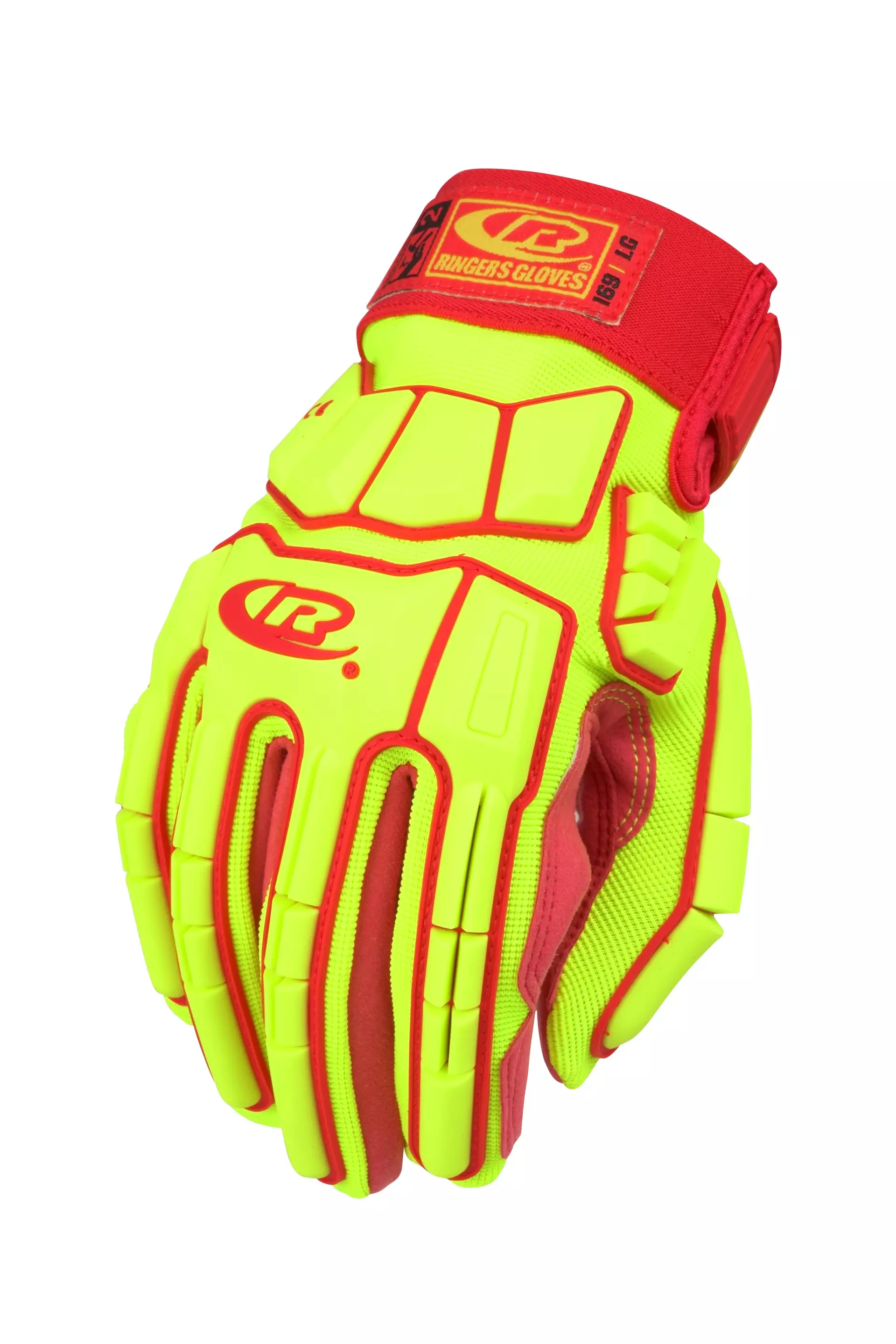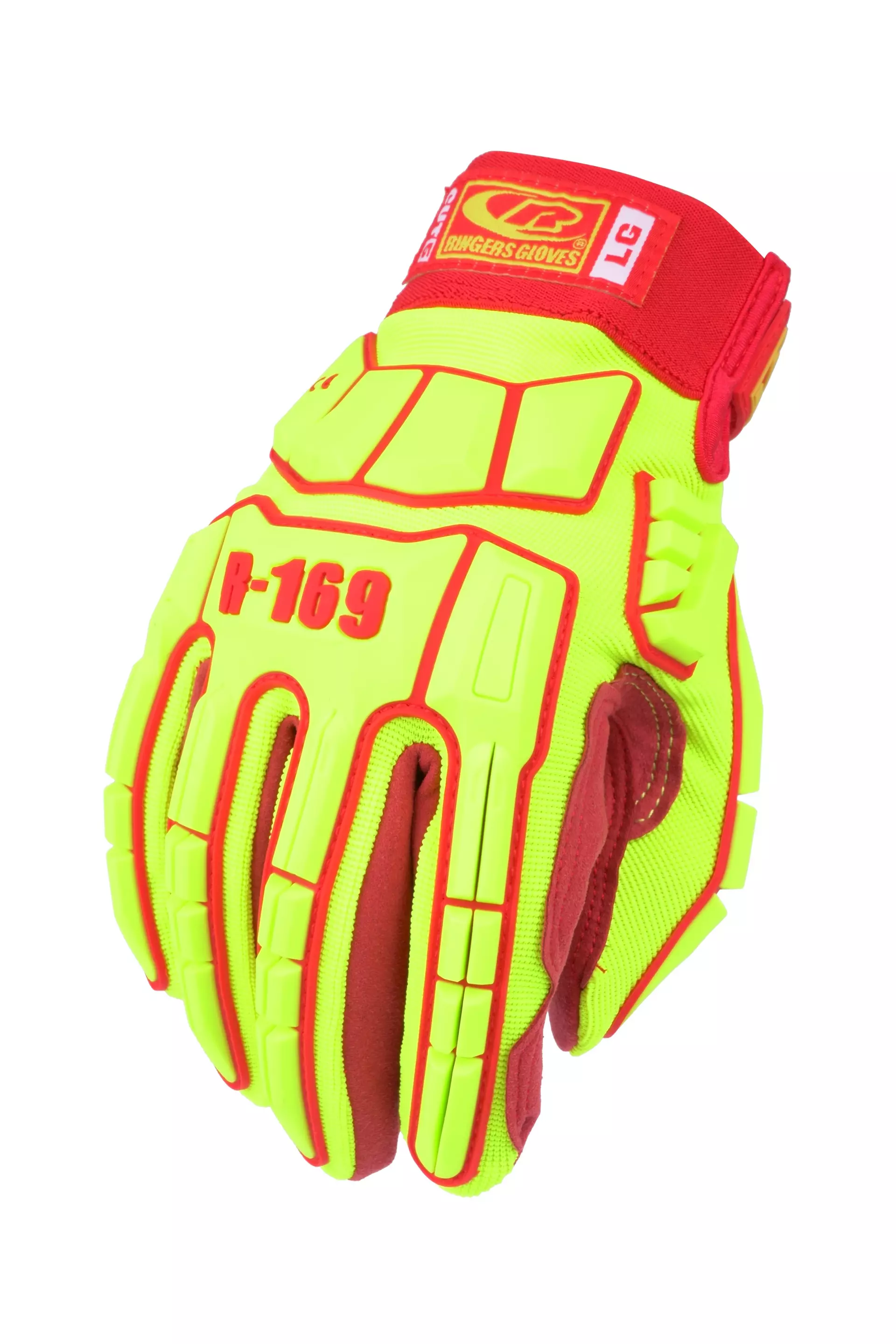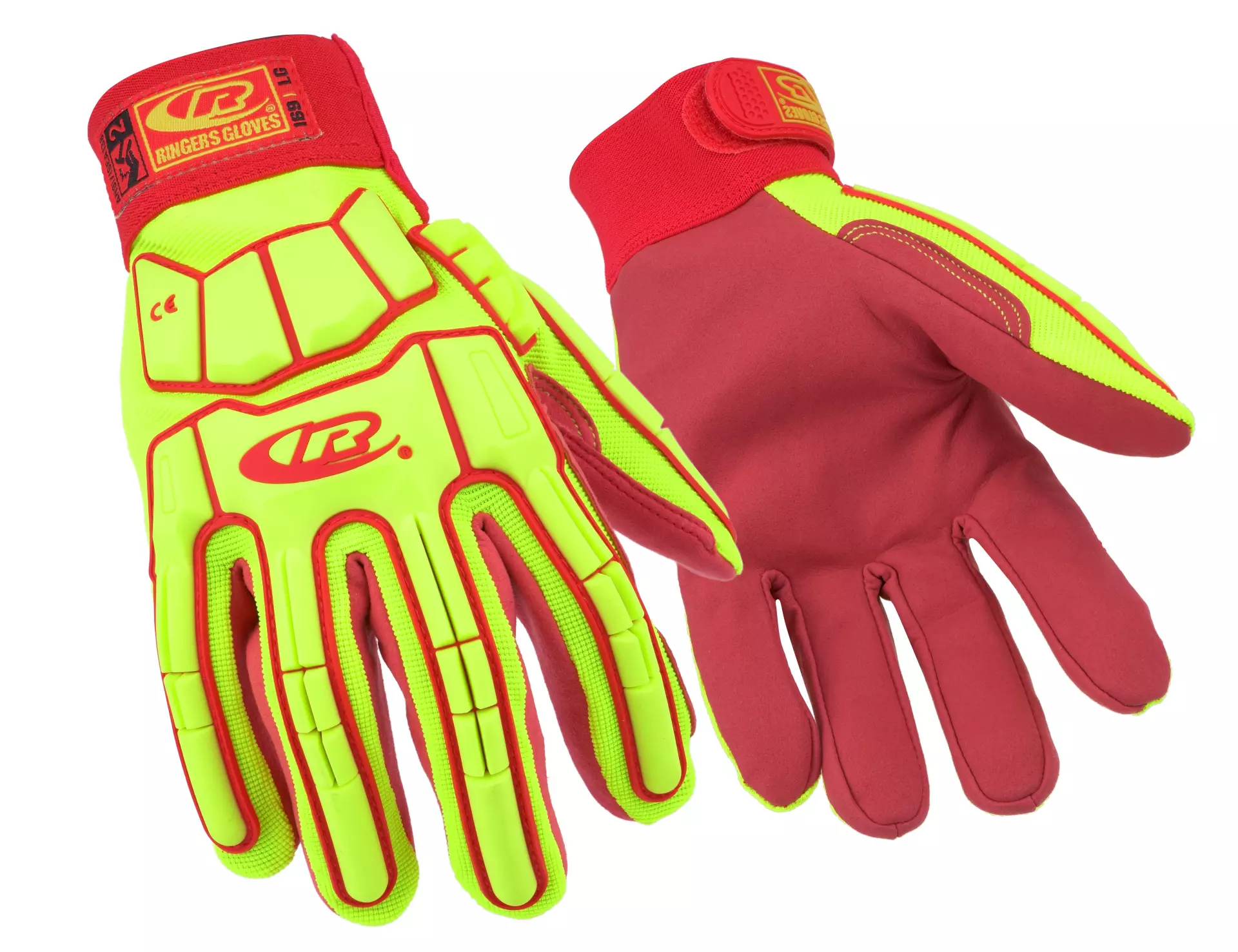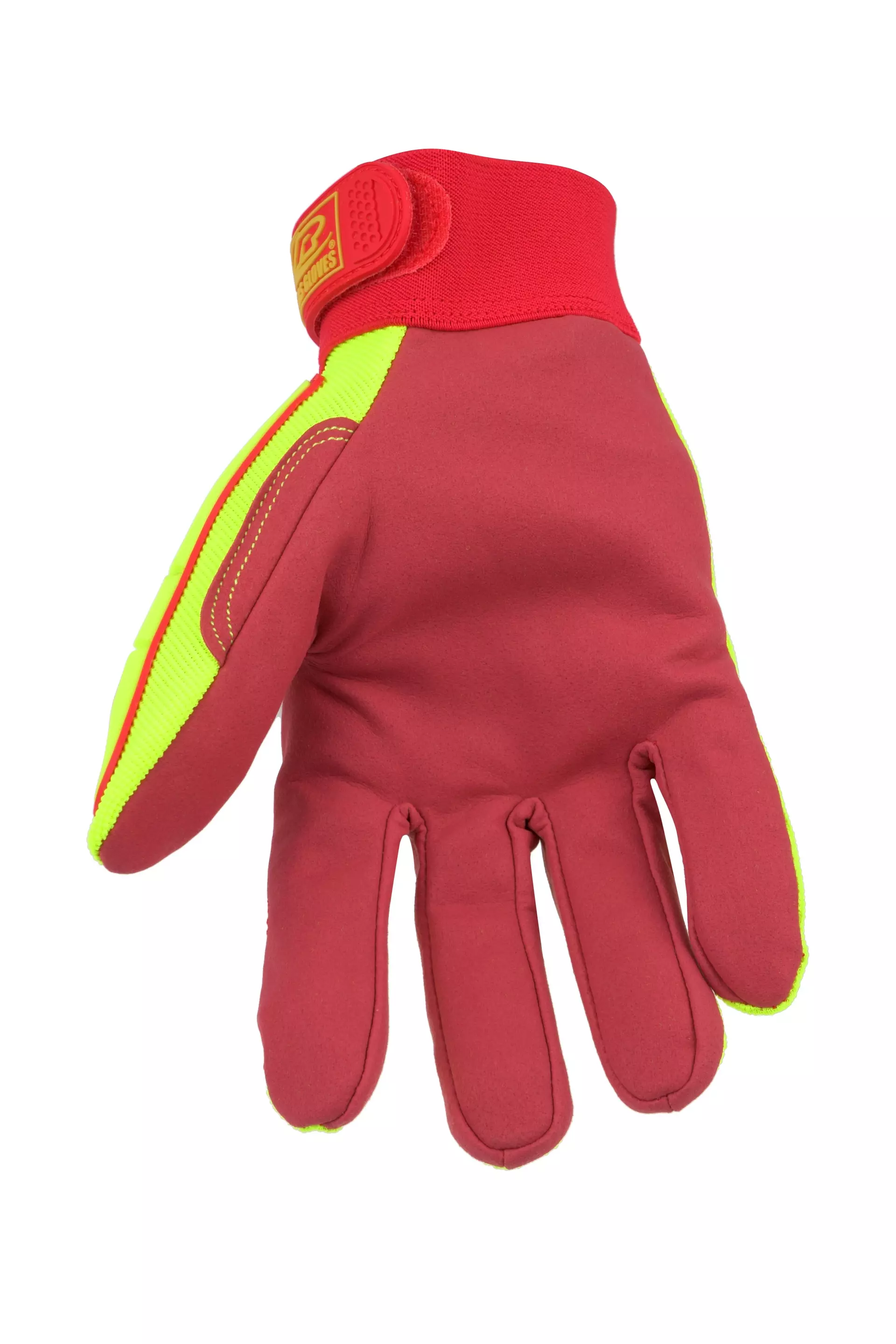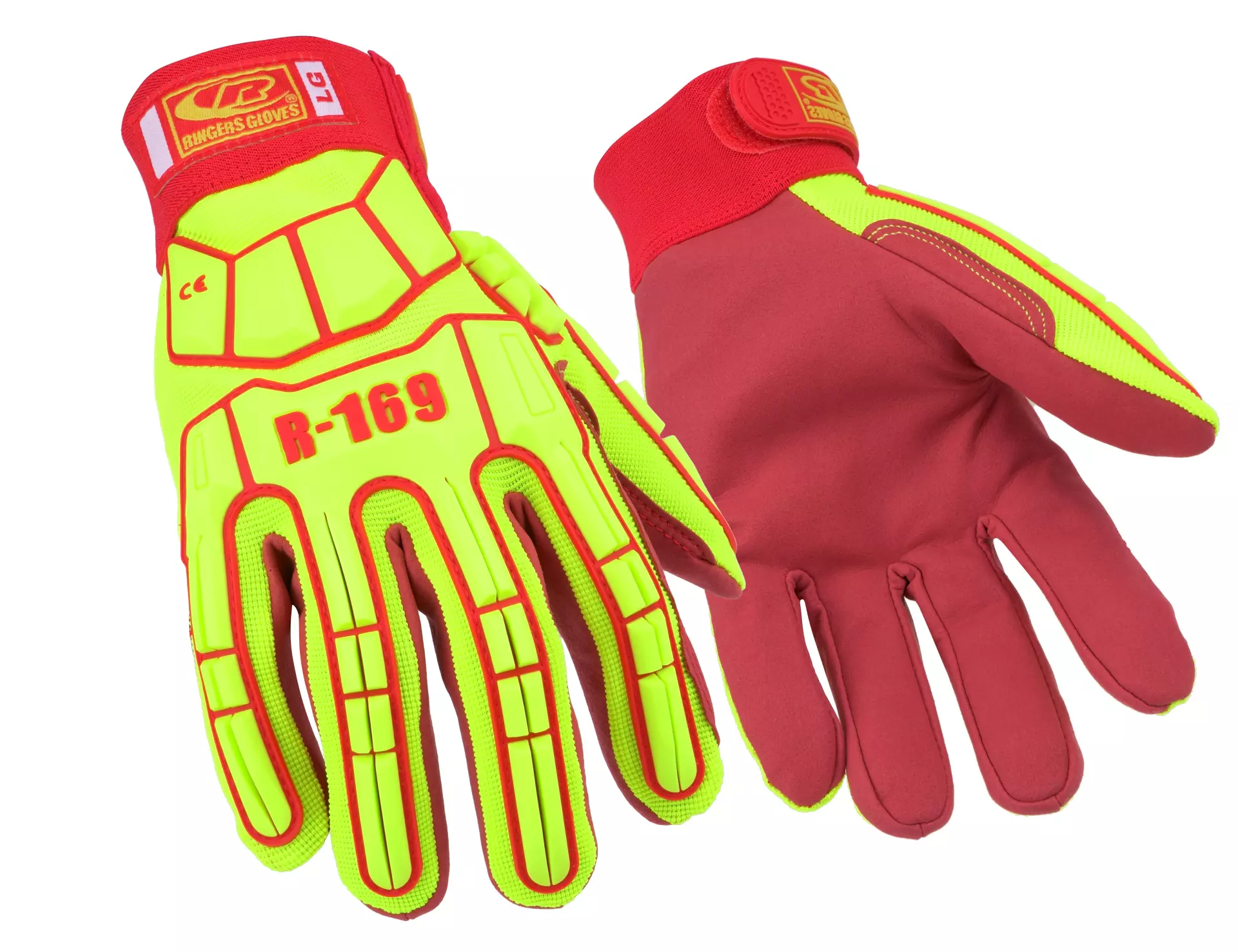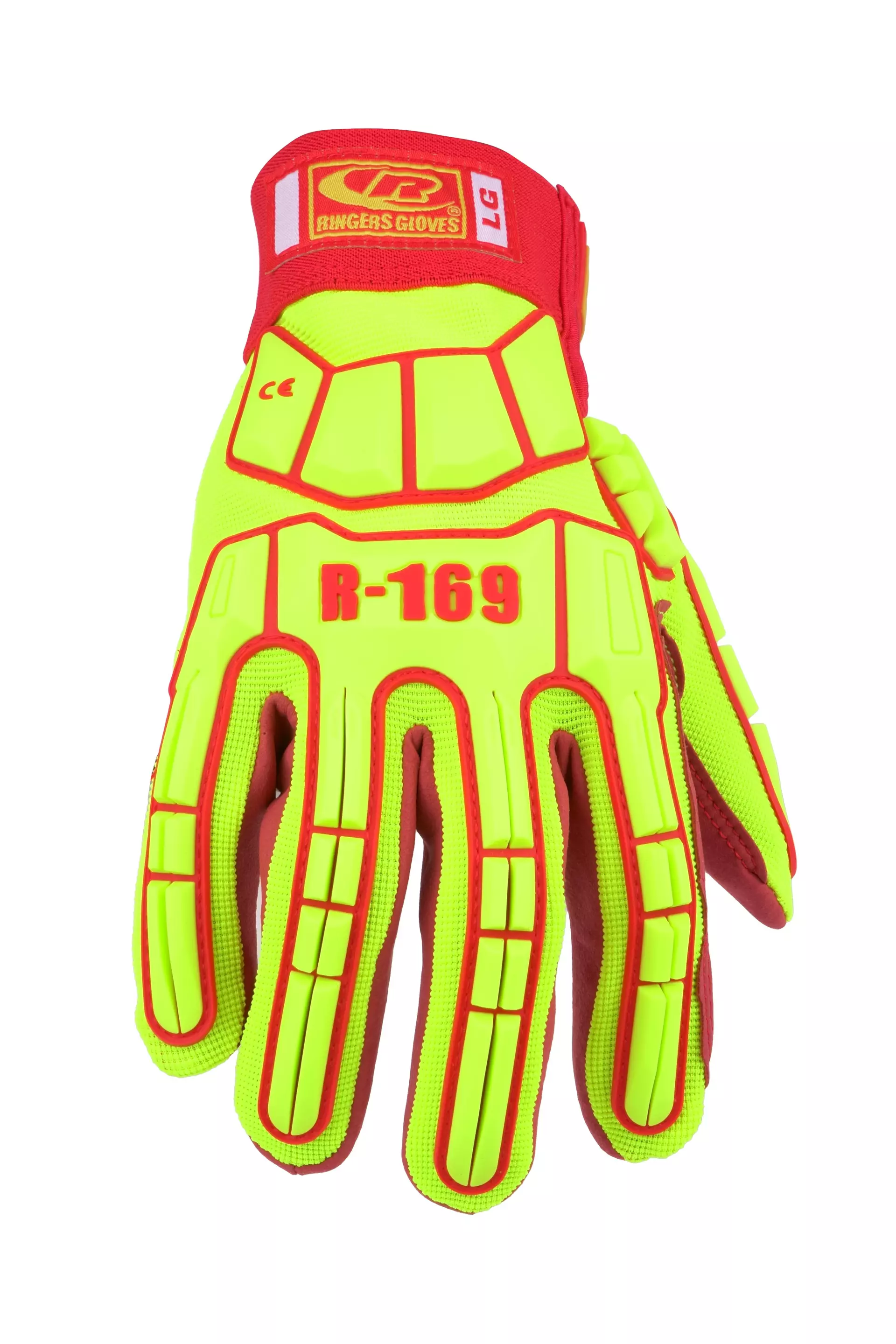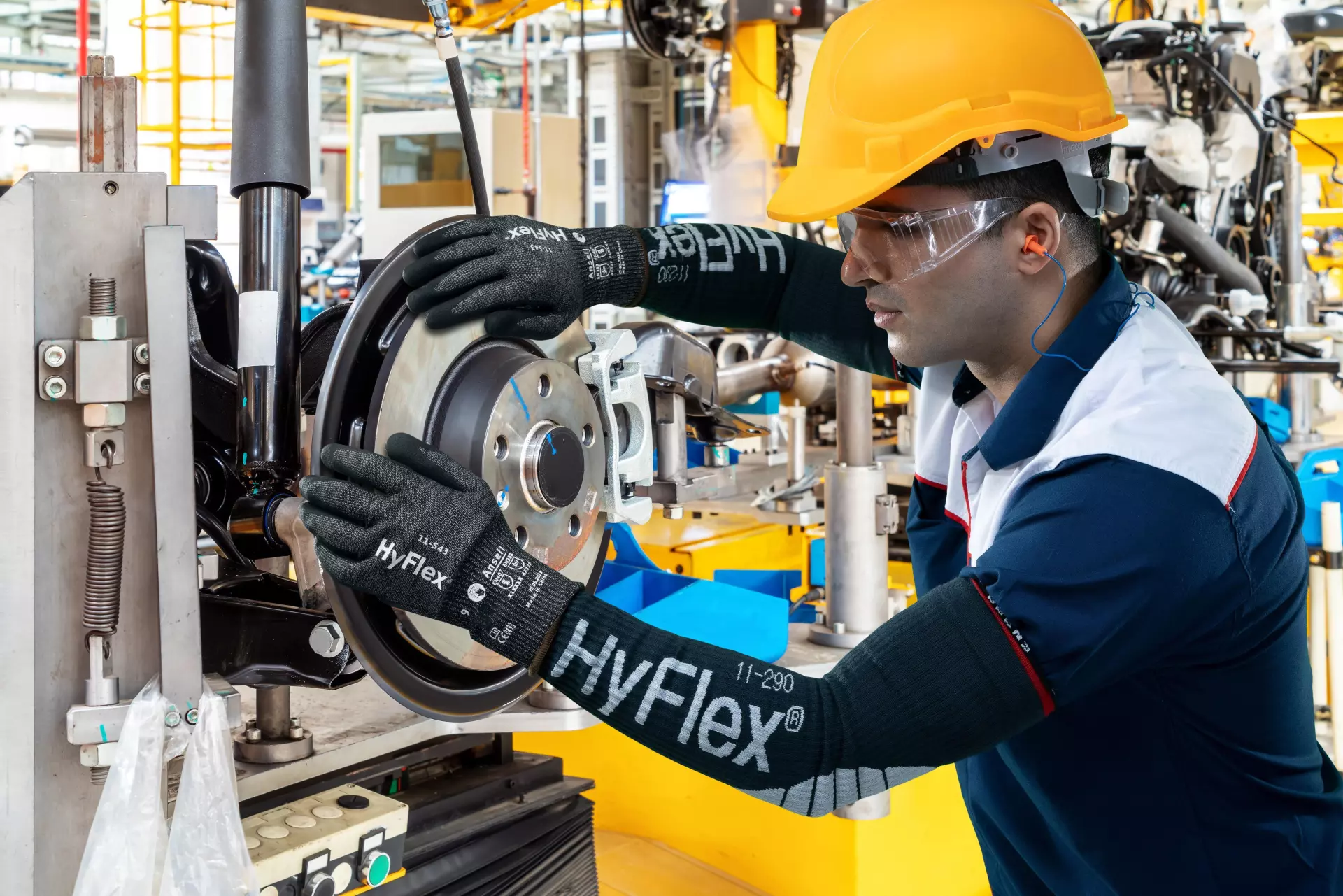Ringers 169
4.9 / 5
Product description
Description
Specialized defenses: RINGERS® R169 impact protection gloves have been developed with Ringers' F3 Technology™ and a patented TPR (thermoplastic rubber) design, protecting hands from the top down and over the knuckles and fingers
Enhanced features: They feature a hook and loop rubber pull tab closure, for a secure cuff with an adaptable fit, while a seamless index finger design further protects areas prone to wear and tear
Advanced defenses: These RINGERS® gloves are rigorously tested, meeting EN 388 level F for cut resistance and ANSI/ISEA 138 Level 2 for impact protection
Improved durability: Premium synthetic leather has been used in these cut-resistant gloves’ palm construction, enhancing durability
Recommended for
Makeup and breakout tools
Assembly of parts
Unloading and stacking pipe
Preparation of site - unloading of lines and valves
General pumping work
Handling of tools
Heavy machine operation
Maintenance
Scaffolding
Loading and hauling
Primary assembly
Mounting and dismantling
Seizing rough blocs and cylinders
Production line support & maintenance
Product Details
Available Sizes : 8, 9, 10, 11, 12, 13
Coating Color : Red
Construction : Cut & Sewn
Cuff Style : Adjustable
Grip Design : Synthetic Leather
Latex Free : Yes
Liner Material : Hppe
Washing Temperature : 30 °C (86 °F)
About Knuckle Protection Work Gloves
Knuckle Protection Work Gloves feature reinforced padding across the back of the hand to shield against impacts and crushing injuries. These specialized gloves combine the comfort of knit designs with strategic protection, making them ideal for construction, oil and gas, or heavy machinery operation.
- Cut Resistant
- Impact Resistance
- Machine Washable
- Hand Protection
Standards and labels
Ansell delivery terms
Free delivery for all Ansell products
1 561,74 €
Price per 10 packages (50 pairs)
31,23 € / pair
Free delivery
A carton contains 10 packages (50 pairs)
